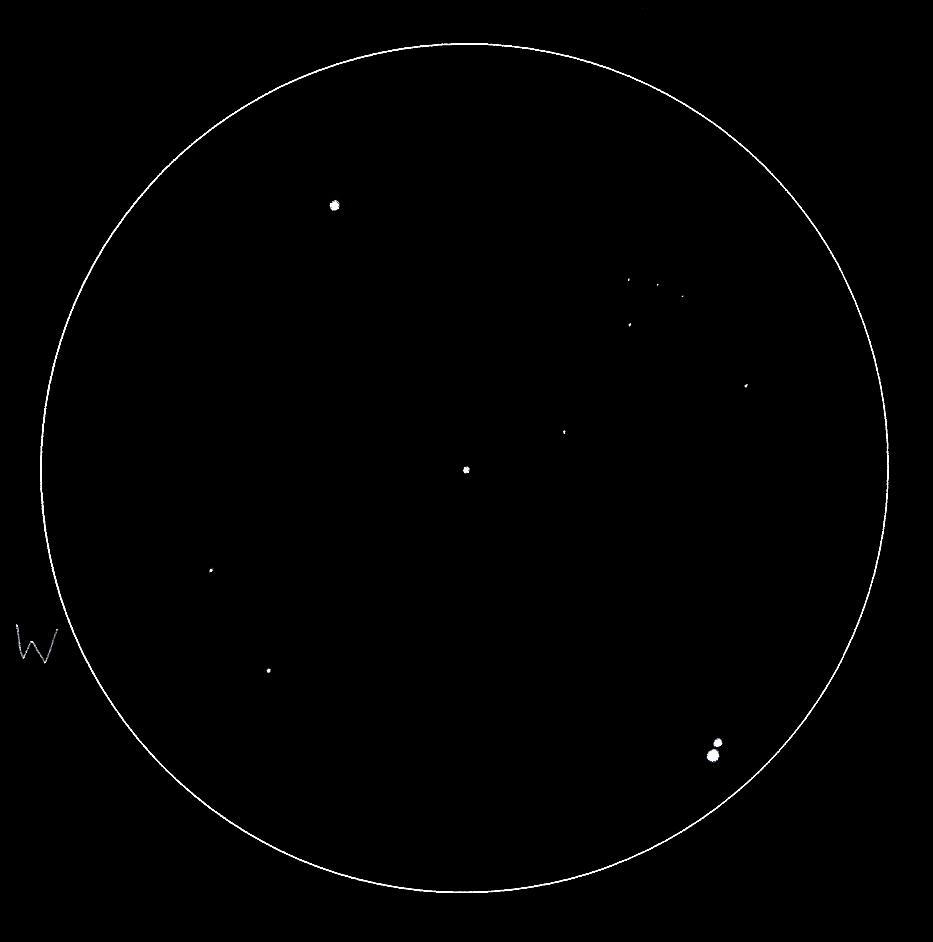
Vesta and Algieba
Sketch and Details by Jef De Wit
Asteroid 4 Vesta reaches opposition on 20 February when it will be opposite the Sun in the sky, making it well placed for observation. At mag. +6.1, this 530 km-diameter space rock is right on the threshold of naked eye visibility from a site with very dark and clear skies (not the case for my backyard L).
Vesta looks just like a star when seen through a telescope and is easily confused with other stars in the area. But on 16 February the asteroid was very easy to spot. It passed almost exactly between Algieba (gamma Leonis) and the fainter 40 Leonis (mag. +4.8) that lies just to the south.
Algieba is nice double star (mag. +2.2 and +3.5, separated by 4.4”) that was easily split. I had trouble seeing colour in the double star. Although both stars are reported as yellow, only the western part looked a little bit yellow to me. The eastern star looked rather bluish.
Source: Sky at Night, February 2010
Clear skies
Jef De Wit
Object Name: Vesta
Object Type: asteroid
Location: Hove, Belgium (51°09’ north lat. 4°28’ east long.)
Date and time: 16 February 2010 around 22.30 UT
Equipment: Orion Optics UK 12” Dobson
Eyepiece: 13mm Nagler T6 (magnification 92x)
FOV sketch: approx 25’
NELM: 4,5 mag
Medium: graphite pencil HB/n°2, printing paper, scanned and inverted, some cleaning up was made with Paint

Jef,
Very nice sketch. This really is a bright asteroid that is fun to track in front of the stars on a sequence of clear nights.
Frank 🙂
Jef,
Your sketch is very interesting. Thank You.
Marek